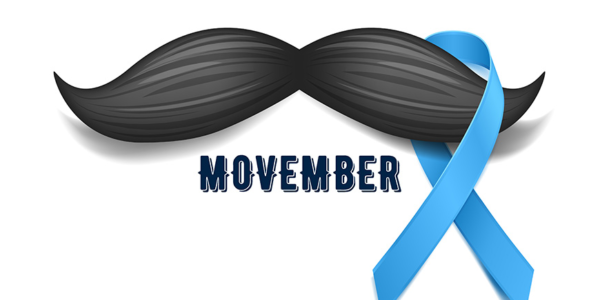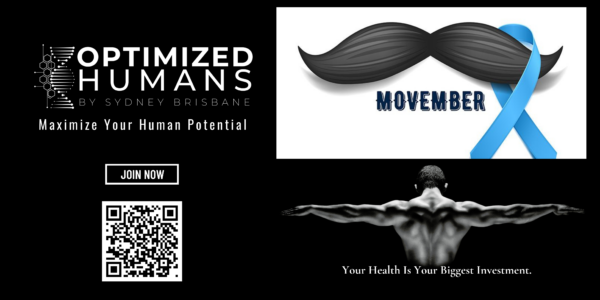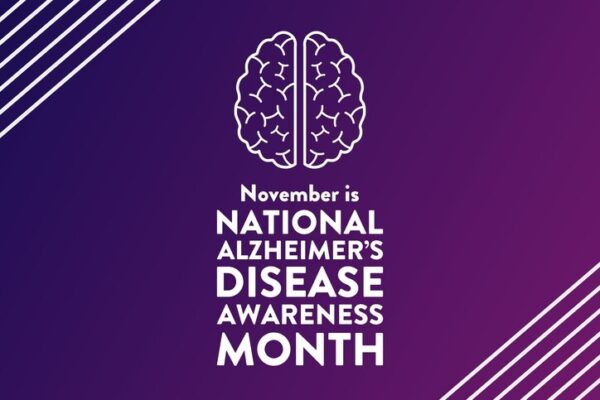
Set Goals
Introduction
As December winds down, it’s the perfect time to reflect on the past year and set goals for the year ahead. A fresh start in January begins with intentional planning in December. This blog explores how you can set achievable health goals and build a foundation for success with the Optimized Humans App.
Why Goal Setting Matters
Goals provide direction and motivation, especially during transitions. Whether your focus is weight loss, muscle gain, or improved mental well-being, starting with clear objectives ensures you stay consistent.
Steps to Set and Achieve Your Health Goals
- Reflect on 2024: Review what worked and what didn’t in your fitness and wellness journey.
- Set SMART Goals: Make your goals Specific, Measurable, Achievable, Relevant, and Time-bound.
- Create a Plan: Break down your goals into smaller, actionable steps.
- Track Progress: Use the Optimized Humans App to monitor workouts, meals, and progress.
Closing Thoughts
Your health goals are within reach when you approach them with clarity and the right tools. Let December be the springboard for an empowered and healthier 2025.
LETS GET FIT TOGETHER: Begin your journey to optimal health with Optimized Humans. Subscribe today and use code NEWYEARFIT25 for an exclusive discount!

Introduction
The holiday season is often synonymous with joy and celebration, but it can also bring stress, fatigue, and emotional strain. Whether it’s managing expectations or juggling responsibilities, staying mentally centered is crucial. This blog explores how mindfulness and simple practices can support your mental well-being during this busy season.
Why the Holidays Can Be Stressful
The holidays are full of activities, from gift shopping to family gatherings, which can be overwhelming. Financial pressures, travel plans, and high expectations can add to the stress, affecting both your mental and physical health.
Mindfulness Techniques for Holiday Stress
- Practice Gratitude: Take time each day to reflect on things you’re thankful for.
- Breathe Deeply: Engage in breathing exercises to calm your mind and reduce stress.
- Set Boundaries: Say no to activities that overextend your energy or resources.
- Stay Active: Exercise is a powerful tool for stress relief and mental clarity.
Closing Thoughts
The holidays are a time to reconnect with what truly matters. Prioritizing your mental health ensures you can fully enjoy the season and start the new year refreshed.
Call to Action: Optimize your mind and body with the Optimized Humans App. Sign up today using code NEWYEARFIT25 for exclusive holiday savings.
Introduction
For individuals managing diabetes, the holiday season can be a tricky time. With sweet treats, family feasts, and festive drinks around every corner, it’s easy to feel overwhelmed. This blog shares practical strategies to enjoy the holidays while keeping blood sugar levels in check.
The Holiday Challenge for Diabetes Management
The abundance of high-carb and high-sugar foods during the holidays can lead to blood sugar spikes, making it harder to manage diabetes. However, with a bit of planning and mindfulness, you can indulge while staying on track with your health goals.
Tips for Managing Diabetes During the Holidays
- Plan Your Meals: Stick to your meal plan as closely as possible. If you’re attending a party, have a balanced snack beforehand.
- Portion Control: Savor small portions of your favorite holiday dishes instead of overloading your plate.
- Stay Hydrated: Drinking water can help stabilize blood sugar levels and curb overeating.
- Monitor Blood Sugar: Keep track of your levels more frequently during this period to make necessary adjustments.
Closing Thoughts
The holidays should be a time of joy and connection, not stress about your health. With the right strategies, you can navigate the season confidently while keeping your diabetes well-managed.
LETS GET HEALTHY TOGETHER: Join Optimized Humans to access tailored meal plans and fitness routines that support your health goals. Use code NEWYEARS25 for a discount on your subscription.
Introduction
The holiday season is a time for celebration, family, and often, overindulgence. While it’s a joyous time of year, it can also be hard on your heart. Stress, rich foods, and disrupted routines can all take a toll on cardiovascular health. This blog explores how you can enjoy the festivities while keeping your heart healthy.
Why Heart Health Matters During the Holidays
The holiday season is a period when heart-related health problems tend to spike. The combination of colder weather, increased stress, and dietary indulgences can lead to elevated blood pressure and other heart-related concerns. Keeping your cardiovascular system in check is essential to ensure you enter the new year strong.
Tips for a Healthy Heart This Holiday Season
- Stay Active: Incorporate exercise into your holiday schedule, such as brisk walks or short home workouts.
- Mind Your Plate: Balance indulgent meals with plenty of vegetables, lean proteins, and whole grains.
- Manage Stress: Take time for relaxation techniques like meditation or yoga to lower stress levels.
- Limit Alcohol: Enjoy in moderation to prevent spikes in blood pressure.
Closing Thoughts
Your heart works hard for you every day. This holiday season, give it the care and attention it deserves. With small, intentional choices, you can keep your cardiovascular system strong while enjoying the festivities.
NEW YEAR RESOLUTION: Get ready for a heart-healthy new year with the Optimized Humans App! Sign up now and use code NEWYEARFIT25 for a special discount this holiday season.
November is National Alzheimer’s Disease Awareness Month, a time to focus on one of the most prevalent and devastating conditions affecting millions of people worldwide. Alzheimer’s disease is a progressive neurological disorder that impairs memory, thinking, and behavior. Raising awareness about this condition is crucial in helping people understand its effects, prevention strategies, and the steps we can take to support brain health throughout life.
In this post, we’ll explore what Alzheimer’s disease is, its risk factors, the importance of early detection, how lifestyle choices like exercise and nutrition can help lower the risk, and some key statistics to help raise awareness.
What is Alzheimer’s Disease?
Alzheimer’s disease is the most common form of dementia, accounting for about 60-80% of dementia cases. It’s a degenerative condition that primarily affects memory, thinking skills, and behavior. As the disease progresses, it interferes with a person’s ability to carry out even the simplest tasks, eventually leading to complete dependency on others for care. Alzheimer’s is a fatal condition with no cure, but early detection and proper care can slow its progression and improve quality of life.
The disease typically affects people over the age of 65, although early-onset Alzheimer’s can appear in people as young as 40 or 50. It’s characterized by the buildup of amyloid plaques and tau tangles in the brain, leading to the loss of connections between neurons, the brain’s cells. Over time, this damage results in cognitive decline and the shrinking of brain tissue.
Risk Factors and Early Signs
Alzheimer’s disease develops due to a combination of genetic, environmental, and lifestyle factors. Here are some key risk factors:
- Age: The greatest known risk factor for Alzheimer’s is age, with the majority of cases occurring in individuals over 65.
- Family History: Those with a parent, sibling, or child with Alzheimer’s are more likely to develop the disease.
- Genetics: Certain genes, such as the APOE-e4 gene, are associated with a higher risk of developing Alzheimer’s.
- Chronic Conditions: Conditions like heart disease, diabetes, and high blood pressure can increase the risk of Alzheimer’s by affecting the health of blood vessels that nourish the brain.
- Lifestyle Factors: Lack of physical activity, poor diet, and chronic stress have all been linked to an increased risk of cognitive decline and Alzheimer’s.
Early signs of Alzheimer’s often include memory loss, difficulty completing familiar tasks, trouble with language, and confusion about time or place. It’s important to recognize these signs early and seek medical evaluation, as early intervention can make a significant difference in managing the condition.
How a Healthy Lifestyle Can Help Lower the Risk
While there is no definitive way to prevent Alzheimer’s, research suggests that certain lifestyle factors may reduce the risk or delay the onset of the disease. Maintaining a healthy brain is closely tied to keeping the heart, body, and mind in good shape. Here are some ways to support brain health and lower your risk of Alzheimer’s:
- Regular Exercise: Physical activity increases blood flow to the brain and supports the growth of new brain cells. It also reduces the risk of chronic diseases that contribute to Alzheimer’s, such as heart disease and diabetes. Studies have shown that regular aerobic exercise, like walking, swimming, or cycling, can help improve memory and cognitive function.
- Healthy Diet: A brain-healthy diet is rich in fruits, vegetables, whole grains, and healthy fats. The Mediterranean and DASH diets are particularly beneficial, emphasizing foods like leafy greens, berries, nuts, fish, and olive oil. These diets have been shown to improve cognitive function and reduce the risk of Alzheimer’s by providing essential nutrients that protect brain cells.
- Mental Stimulation: Keeping the brain active is crucial for cognitive health. Engaging in mentally stimulating activities, such as puzzles, reading, learning new skills, or playing strategy games, can strengthen brain function and help build a cognitive reserve that may delay the onset of Alzheimer’s symptoms.
- Social Engagement: Maintaining social connections is important for brain health. Isolation and loneliness can increase the risk of cognitive decline, while staying socially active with friends, family, and community activities can improve mental and emotional well-being.
- Adequate Sleep: Poor sleep, especially chronic sleep deprivation, has been linked to an increased risk of Alzheimer’s. Sleep is essential for clearing toxins from the brain that accumulate during the day, including amyloid, a protein linked to Alzheimer’s.
- Stress Management: Chronic stress can accelerate cognitive decline. Techniques such as mindfulness, meditation, yoga, and relaxation exercises can help manage stress and promote a healthy mind.
Alzheimer’s Disease Awareness: Key Statistics
The impact of Alzheimer’s disease is widespread, affecting not only those diagnosed but also their families and caregivers. Here are some key statistics to raise awareness about Alzheimer’s:
- According to the Alzheimer’s Association, more than 6 million Americans are living with Alzheimer’s disease, and this number is expected to reach nearly 13 million by 2050.
- One in three seniors dies with Alzheimer’s or another form of dementia, making it a leading cause of death among older adults.
- Women are disproportionately affected, making up nearly two-thirds of Americans with Alzheimer’s. Women are also more likely to be caregivers for someone with the disease.
- Alzheimer’s and other dementias will cost the U.S. $355 billion in 2021, and this figure could rise to over $1.1 trillion by 2050 as the population ages.
- African Americans and Hispanics are at a higher risk of Alzheimer’s, with African Americans being twice as likely and Hispanics one and a half times as likely to develop the disease compared to non-Hispanic whites.
These statistics highlight the urgent need for increased awareness, research funding, and support for those affected by Alzheimer’s.
Final Thoughts: Raising Awareness and Taking Action
National Alzheimer’s Disease Awareness Month is an opportunity for all of us to learn more about this devastating condition, support research, and encourage healthier lifestyle choices that can lower the risk of Alzheimer’s. By staying active, eating well, and keeping your mind and heart healthy, you can reduce your risk of cognitive decline and take proactive steps toward preserving your brain health.
While there’s no cure for Alzheimer’s yet, advances in research and a greater understanding of the disease give hope for the future. As we raise awareness this month, remember that small lifestyle changes can make a big difference.
Looking for guidance on how to stay physically and mentally healthy? Join Optimized Humans today to gain access to personalized workout plans, nutrition advice, and ongoing support for your health journey. Use the code ALZHEIMERSAWARE for an exclusive discount on your subscription. Let us help you optimize your body and mind for a healthier, more vibrant life.
Understanding Diabetes: The Importance of Awareness, Prevention, and Exercise
November is National Diabetes Awareness Month, a time to increase understanding about diabetes and encourage lifestyle changes that can help prevent and manage this chronic condition. Diabetes affects millions of people worldwide, but through education and proactive measures, you can lower your risk and lead a healthier, more active life. In this post, we’ll explore what diabetes is, how exercise plays a crucial role in prevention and management, some important statistics on diabetes and movement, and provide a 3-day workout plan to get you started on the right path.
What is Diabetes?
Diabetes is a chronic condition that affects how your body turns food into energy. When you eat, your body breaks down the food into sugar (glucose), which is then released into your bloodstream. In response, your pancreas produces insulin, which helps your body’s cells use that glucose for energy. In people with diabetes, either the body doesn’t make enough insulin or it can’t use insulin effectively, leading to high blood sugar levels.
There are three main types of diabetes:
- Type 1 Diabetes: An autoimmune condition where the body’s immune system attacks the cells in the pancreas that make insulin.
- Type 2 Diabetes: The most common form of diabetes, where the body becomes resistant to insulin, and the pancreas cannot make enough to compensate.
- Gestational Diabetes: Diabetes that occurs during pregnancy and usually resolves after giving birth, although it increases the mother’s risk of developing Type 2 diabetes later in life.
Managing diabetes is crucial to avoid complications such as heart disease, kidney failure, vision loss, and nerve damage. Fortunately, regular physical activity and a healthy lifestyle can help prevent Type 2 diabetes and improve the management of all forms of the condition.
How Exercise is Vital for Diabetes Management
Exercise is a key factor in preventing and managing diabetes. Physical activity helps regulate blood sugar levels, improves insulin sensitivity, and reduces the risk of developing Type 2 diabetes. For those already living with diabetes, exercise can help manage blood glucose levels and reduce the risk of complications.
Here’s why exercise is essential for diabetes:
- Improved Insulin Sensitivity: Regular exercise makes your muscles more sensitive to insulin, allowing your body to use blood sugar more effectively.
- Blood Sugar Control: Physical activity helps lower blood glucose levels and can keep them stable for hours after exercise.
- Weight Management: Being overweight is a major risk factor for Type 2 diabetes. Exercise helps burn calories, maintain a healthy weight, and reduce body fat, especially around the abdomen.
- Cardiovascular Health: Diabetes significantly increases the risk of heart disease. Exercise strengthens the heart, lowers blood pressure, and improves cholesterol levels.
- Mental Health Benefits: Managing a chronic condition like diabetes can be mentally challenging. Exercise releases endorphins that improve mood, reduce stress, and boost mental well-being.
Diabetes and Physical Activity: Eye-Opening Statistics
The rise of diabetes worldwide has been alarming, especially as lifestyles have become more sedentary. Here are some key statistics that highlight the need for increased movement:
- According to the International Diabetes Federation (IDF), approximately 537 million adults (ages 20-79) were living with diabetes in 2021, and this number is expected to rise to 643 million by 2030.
- Type 2 diabetes accounts for around 90-95% of all diabetes cases, and a sedentary lifestyle is one of the main contributing factors.
- The Centers for Disease Control and Prevention (CDC) reports that 1 in 3 adults in the U.S. have prediabetes, a condition where blood sugar levels are higher than normal but not yet high enough to be diagnosed as diabetes.
- Regular physical activity can reduce the risk of developing Type 2 diabetes by up to 58%, according to the Diabetes Prevention Program (DPP).
- Only about 22% of people with diabetes meet the recommended physical activity guidelines, despite the significant benefits it offers for blood sugar control and overall health.
It’s clear that incorporating regular physical activity into your lifestyle is one of the best ways to prevent and manage diabetes.
3-Day Workout Program for Diabetes Management
To help you get started on your fitness journey, here’s a simple 3-day workout program designed for people looking to manage or prevent diabetes. This program includes a mix of cardiovascular exercise, strength training, and flexibility work to improve overall health.
| Day | Exercise | Sets | Reps | Rest |
|---|---|---|---|---|
| Day 1: Cardio & Lower Body | ||||
| Brisk Walking or Cycling | 1 | 30 min | – | |
| Bodyweight Squats | 3 | 15 | 60 sec | |
| Step-Ups (with or without weights) | 3 | 12 per leg | 60 sec | |
| Calf Raises | 3 | 15 | 60 sec | |
| Hamstring Stretch | 3 | 30 sec | – | |
| Day 2: Upper Body Strength | ||||
| Push-ups (on knees if needed) | 3 | 10 | 60 sec | |
| Dumbbell Rows (or Resistance Bands) | 3 | 12 | 60 sec | |
| Shoulder Press | 3 | 12 | 60 sec | |
| Plank | 3 | 30 sec | 60 sec | |
| Chest Stretch | 3 | 30 sec | – | |
| Day 3: Full-Body & Core | ||||
| Jumping Jacks or Marching in Place | 3 | 1 min | 30 sec | |
| Lunges | 3 | 12 per leg | 60 sec | |
| Russian Twists | 3 | 15 per side | 30 sec | |
| Glute Bridges | 3 | 15 | 60 sec | |
| Child’s Pose Stretch | 3 | 30 sec | – |
This program is designed to be gentle yet effective for managing blood sugar levels and building strength. By combining cardiovascular activity with strength training and flexibility exercises, you’ll create a balanced routine that supports overall health and diabetes management.
Final Thoughts: Take Control of Your Health This Diabetes Awareness Month
Diabetes is a serious condition, but with the right lifestyle changes, it can be managed, and in many cases, prevented. By incorporating regular exercise, maintaining a healthy diet, and staying informed, you can reduce your risk of developing Type 2 diabetes and improve your overall well-being.
Let this Diabetes Awareness Month be a reminder to take charge of your health. Whether you’re looking to prevent diabetes, manage the condition, or simply live a healthier lifestyle, staying active is key to achieving your goals.
Ready to take your fitness journey to the next level? Join Optimized Humans today and gain access to personalized workout plans, nutritional guidance, and a supportive community to help you manage your health. Use the code MOVEMBERFIT for an exclusive discount on your subscription. Take control of your health and start optimizing your life today!

Movember: Raising Awareness for Health and the Importance of Fitness
Movember is more than just a month of growing mustaches; it’s a movement dedicated to raising awareness about men’s health, particularly in areas like prostate cancer, testicular cancer, and mental health. It’s a time when men are encouraged to take control of their health and well-being, which includes not only monitoring their physical health but also maintaining an active lifestyle. In this post, we’ll dive into the origins of Movember, why exercise is vital to your health, some compelling statistics on fitness and movement, and a 3-day workout plan to get you moving.
The Origins of Movember
Movember started in 2003 when two friends in Melbourne, Australia, joked about bringing the mustache back into style. What began as a light-hearted challenge quickly turned into a serious cause. Inspired by a friend’s mother who was fundraising for breast cancer, they decided to give the mustache growing challenge a purpose: raising awareness for men’s health, particularly prostate cancer.
Today, Movember has grown into a global movement with millions of participants from around the world. By growing mustaches and participating in fundraising activities, men (and women) help bring attention to critical health issues that men face, such as testicular cancer, mental health struggles, and physical inactivity. It’s a chance for men to start conversations about health, undergo checkups, and encourage each other to lead healthier lives.
Why Exercise is Vital to Your Health
Exercise is a key factor in preventing many of the health issues that Movember aims to raise awareness about. Regular physical activity helps maintain a healthy weight, improve cardiovascular health, reduce the risk of chronic diseases, and improve mental health.
Here are some specific ways exercise positively impacts men’s health:
- Reduces the Risk of Prostate and Testicular Cancer: Studies have shown that regular exercise can help lower the risk of prostate cancer and improve outcomes for those diagnosed. Exercise also improves testicular health by promoting blood flow and reducing stress levels.
- Boosts Mental Health: Physical activity is a natural antidepressant. Exercise releases endorphins that improve mood, reduce anxiety, and help manage stress.
- Improves Cardiovascular Health: Cardiovascular diseases are among the leading causes of death for men. Exercise strengthens the heart, improves blood circulation, and lowers the risk of heart disease.
Statistics on Fitness and Movement
The modern lifestyle often leads to a sedentary way of living, which has contributed to rising rates of chronic diseases. Here are some important statistics to highlight the importance of staying active:
- According to the World Health Organization (WHO), more than 23% of adults are not active enough. This sedentary behavior increases the risk of heart disease, obesity, diabetes, and certain cancers.
- Physical inactivity is the fourth leading risk factor for global mortality, responsible for about 3.2 million deaths annually, according to WHO.
- The American Heart Association (AHA) recommends that adults engage in at least 150 minutes of moderate-intensity aerobic exercise, or 75 minutes of vigorous exercise, per week to maintain good health.
- Men who are physically active are up to 50% less likely to develop serious chronic conditions, such as heart disease, compared to inactive men.
By incorporating regular physical activity into your routine, you can drastically improve your health, reduce your risk of chronic illness, and improve mental well-being.
3-Day Workout Program to Get You Moving
Here’s a simple but effective 3-day workout program designed to get you moving, boost your strength, and improve your cardiovascular health. This program requires minimal equipment and can be done at home or in the gym. Remember to warm up before each session and cool down afterward with some light stretching.
| Day | Exercise | Sets | Reps | Rest |
|---|---|---|---|---|
| Day 1: Full-Body Strength | ||||
| Squats | 3 | 12 | 60 sec | 45 sec |
| Push-ups | 3 | 10 | 60 sec | 30 sec |
| Dumbbell Rows (or Resistance Band Rows) | 3 | 12 | 60 sec | 30 sec |
| Plank | 3 | 30 sec | 60 sec | 15 sec |
| Lunges | 3 | 12 per leg | 60 sec | 30 sec |
| Day 2: Cardio & Core | ||||
| Jumping Jacks | 3 | 1 min | 30 sec | 20 sec |
| Mountain Climbers | 3 | 30 sec | 30 sec | 20 sec |
| Bicycle Crunches | 3 | 15 per side | 30 sec | 20 sec |
| Burpees | 3 | 10 | 60 sec | 20 sec |
| Russian Twists | 3 | 20 | 30 sec | 20 sec |
| Day 3: Lower Body & Stretching | ||||
| Glute Bridges | 3 | 15 | 60 sec | 30 sec |
| Wall Sit | 3 | 45 sec | 60 sec | 30 sec |
| Calf Raises | 3 | 15 | 60 sec | 30 sec |
| Forward Fold Stretch | 3 | 30 sec | – | 15 sec |
| Hip Flexor Stretch | 3 | 30 sec per side | – | 15 sec |
This simple program is designed to give you a mix of strength, cardiovascular, and flexibility training. The combination of exercises targets all major muscle groups and keeps your body moving, whether you’re just getting started or looking to maintain a fitness routine during Movember.
Final Thoughts: Get Active This Movember
Movember is a reminder that men’s health matters. While growing a mustache is a fun way to raise awareness, taking steps to improve your health is equally important. Incorporating exercise into your routine can help you lower your risk for serious health conditions, improve your mental well-being, and set you up for a healthier life.
So, why not use Movember as a time to not only raise awareness but also take charge of your own health? Whether you’re committing to regular workouts, going for daily walks, or making other healthy lifestyle changes, every step counts.
Ready to optimize your health even further? Sign up for Optimized Humans and gain access to personalized workout plans, meal recommendations, and a supportive fitness community. Use the code MOVEMBERFIT for a special discount when you subscribe! Join us this Movember and take the first step towards a healthier, more active you. https://www.trainerize.me/profile/siiib/Optimized.Humans/
November Health Awareness Summary: Movember, Alzheimer’s, and Pancreatic Cancer
November is a pivotal month in health awareness, shedding light on several critical health concerns that affect millions around the globe. Movember, Alzheimer’s Disease Awareness Month, and World Pancreatic Cancer Month each offer a unique opportunity to raise awareness, promote prevention, and encourage early detection. Let’s take a closer look at each of these initiatives and how they inspire us to take charge of our health.
Movember: A Spotlight on Men’s Health
Movember is a global movement dedicated to men’s health issues, particularly prostate cancer, testicular cancer, and mental health. It encourages men to have open conversations about their health and to take proactive steps toward prevention. This includes regular screenings, maintaining physical activity, and focusing on mental well-being. Movember is also about taking action, whether by growing a mustache to start a conversation or participating in fitness challenges to improve overall health.
National Alzheimer’s Disease Awareness Month: Supporting Brain Health
Alzheimer’s Disease Awareness Month reminds us of the importance of protecting brain health as we age. With no cure for Alzheimer’s, prevention through lifestyle changes is more critical than ever. Regular physical activity, a healthy diet, social engagement, and mental stimulation are some of the best ways to reduce the risk of cognitive decline. The month also emphasizes the significance of early detection, as managing symptoms earlier can improve quality of life.
World Pancreatic Cancer Month: Raising Awareness for Early Detection
Pancreatic cancer is one of the deadliest forms of cancer, often diagnosed too late due to its lack of early symptoms. World Pancreatic Cancer Month focuses on educating the public about the risks, symptoms, and the importance of early detection. Raising awareness can lead to earlier diagnoses and better treatment outcomes. It also highlights lifestyle choices that can reduce cancer risk, such as a nutritious diet, regular exercise, and avoiding smoking.
Each of these awareness campaigns underscores the importance of living a healthy, proactive life. Whether focusing on physical fitness, brain health, or cancer prevention, November is a reminder to prioritize our well-being, seek early detection, and support research and awareness efforts for these critical health issues.

How to Cut Back on Alcohol: Techniques for Reducing Drinking and a Refreshing Mocktail Recipe
Cutting back on alcohol doesn’t have to be a daunting task. Whether you’re taking part in Sober October or just looking to reduce your drinking in general, there are several practical steps you can take to make the transition easier. Plus, we’ll share a refreshing mocktail recipe to help you enjoy social gatherings without the alcohol!
Techniques for Reducing Alcohol Consumption
- Set Clear Goals: Decide how many drinks you want to cut down to per week or aim for a completely alcohol-free period like Sober October. Having a clear goal helps you stay focused.
- Identify Your Triggers: Pay attention to the times and situations where you’re most likely to drink. Is it stress, boredom, or social pressure? Identifying triggers helps you find alternative coping mechanisms.
- Choose Alcohol-Free Days: Start by picking specific days where you won’t drink at all. Gradually increase these days as you get more comfortable without alcohol.
- Find Alternatives: Swap alcoholic drinks for refreshing mocktails, sparkling water, or herbal teas when you’re out with friends or unwinding at home.
- Get Support: Share your goals with friends or join a community like Optimized Humans, where you’ll find support for living a healthier lifestyle.
Refreshing Mocktail Recipe: Cucumber Mint Cooler
Ingredients:
- 1 cucumber, sliced
- 1 handful fresh mint leaves
- 1 tbsp lime juice
- 1 tsp honey (optional)
- Sparkling water or club soda
- Ice cubes
Instructions:
- In a glass, muddle cucumber slices and mint leaves to release their flavors.
- Add lime juice and honey (if using).
- Fill the glass with ice and top with sparkling water or club soda.
- Stir gently and garnish with extra mint leaves or a cucumber slice.
This mocktail is refreshing, hydrating, and perfect for hot days or social gatherings. It gives you the feel of a cocktail without any of the alcohol.
Final Thoughts: Embrace a Healthier Lifestyle This Sober October
Sober October is an excellent opportunity to rethink your relationship with alcohol and take steps toward a healthier, more balanced lifestyle. By understanding the effects of alcohol on your body and mind, exploring alternatives, and reducing your intake, you’ll start to notice improvements in your physical and mental well-being.
Looking to further optimize your health? Sign up for the Optimized Humans app today! Our personalized training and nutrition plans are designed to help you reach your full potential. Plus, for a limited time, get a special discount when you mention this blog post. Start your journey toward better health with Optimized Humans—where wellness meets performance!







